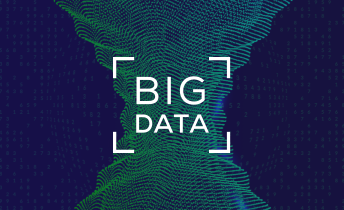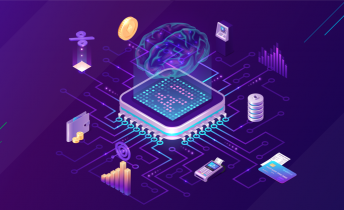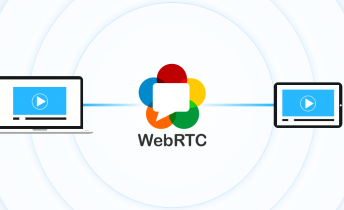 The financial sector is one of the most perspective areas of Artificial Intelligence (AI) applications. According to the PricewaterhouseCoopers research, 52% of financial services industry leaders are currently making “substantial” investments in artificial intelligence, and 72% of business decision makers believe that AI will become a business advantage in the future.
The financial sector is one of the most perspective areas of Artificial Intelligence (AI) applications. According to the PricewaterhouseCoopers research, 52% of financial services industry leaders are currently making “substantial” investments in artificial intelligence, and 72% of business decision makers believe that AI will become a business advantage in the future.
According to Forbes, 70% of financial institutions are already using artificial intelligence to predict incoming cash flows and credit ratings. AI spending in banking is projected to reach $300 billion by 2030, according to the IHS Markit report.
The main goal of artificial intelligence in financial and banking sectors is to evaluate customer preferences, their level of satisfaction with services, and to assist in determining future customer expectations for new financial products and technologies.
The main areas of using artificial intelligence in the banking industry:
- Customer satisfaction.
Individual approach is one of the factors of quality service. Artificial intelligence can reveal customer preferences based on available records. The results will help the program to personalize financial services for a particular user. As a result, the bank’s customers will receive good service, and the credit institution will receive the location of the audience.
- Virtual interlocutor.
With the help of chatbots, banks can provide various financial information, understand the requirements of each client, create individual commercial offers, implement loyalty programs and provide various additional services.
- Fight against fraud.
The strength of artificial intelligence is the continuity of data collection. One way to detect bank fraud is for AI to scan the vast transactional data and monitor for any atypical activities or irregular behaviors. According to IBM, by 2025 the losses from fraud in the world will reach $44 billion.
- Automation of processes.
It helps reduce operational costs and increase productivity, optimize time costs, reduce the risk of human error, and more. JP Morgan Chase has already successfully used Robotic Process Automation (RPA) to perform tasks such as data extraction, compliance with Know Your Customer (KYC) rules and collection of documents. RPA is one of five new technologies that JP Morgan Chase is using to improve its cash management process.
 Artificial Intelligence technologies in banking facilitate the generation of recommendations, forecasts and specialized financial consulting for clients.
Artificial Intelligence technologies in banking facilitate the generation of recommendations, forecasts and specialized financial consulting for clients.
The cumulative potential cost savings for banks from AI-powered apps are estimated to be up to $450 billion this year. These apps provide quick insight into financial strategies, lending rates, and future market progress.
Currently, developments in the application of AI technologies are focused in the following main directions:
- Personalized financial guidance.
Artificial intelligence can help customers make simple and quick financial decisions to get up-to-date information on current market structure, suggestions on financial products in which it is advisable to invest. Statista predicts that by 2025, 478.89 million users will use AI in their asset management schemes.
- Interactive Voice Response Systems (IVRS).
An automated voice system assists in routing calls to appropriate banking departments, informing and ongoing advice to customers.
- Customer Service.
Investments in chatbots and dialog interfaces are a priority for many of the largest banks. Their implementation aims to improve customer service while increasing revenue. Some companies are already creating dedicated chatbots for finance to help customers ask questions via chat, such as “How much did I spend on products last month?” and “What was my personal savings account balance 60 days ago?” among others.
- Security.
AI can use algorithms to identify signs of fraud against specific actions, providing improved user authentication by analyzing various factors. Recently, banks around the world have been implementing biometrics to transform and automate KYC processes. Banks are increasingly using biometric identification of customers to carry out operations using mobile devices such as a smartphone, PC or tablet.
The direction of biometric data analysis by artificial intelligence in selecting financial products, dynamic tracking of clients’ reactions to the tone of their communication with bank employees through wide resolution cameras with facial expressions captured in real time are promising for development. The communication between the bank employee and the client will be simplified when selecting credit products, as the bank will be able to increase the efficiency of assessment of the client’s ability to repay the loans with the help of the AI biometric data assessment.
- Mobile banking.
The basic premise of mobile banking is to provide banking services 24/7. For example, Erica, Bank of America’s chatbot, an artificial intelligence-based virtual assistant, can help customers check balances, remind them of their accounts and answer bank-related questions.
- Algorithmic trading.
Analysis of thousands of pieces of data simultaneously allows artificial intelligence to estimate both expected profits and potential risk, which will help in making commercial decisions. According to JPMorgan, already in 2020, more than 60% of transactions worth more than $10 million were conducted with the help of algorithms. The experts believe that by 2024, the figure will reach $19 million.
 Thus, the goal of implementing artificial intelligence in the financial sector is to provide the most efficient and time-saving services possible while providing a personalized and high-quality environment for building customer satisfaction.
Thus, the goal of implementing artificial intelligence in the financial sector is to provide the most efficient and time-saving services possible while providing a personalized and high-quality environment for building customer satisfaction.
AI-based products offer a number of undeniable benefits to companies, investors and consumers. However, the adoption of AI technology faces a number of challenges:
- The complexity of integrating AI into a financial institution’s existing business system, the rules of which are clearly regulated by the financial regulator.
- The quality of original data sets, which are the basis of AI operation. The results of training algorithms directly depend on the quantity and correctness of data.
- The risk of getting a “black box” model, i.e. a forecast without its explanation.
- Data labeling. A few years ago, most of the data was structured – textual. Today, most of the data consists of images and video. For AI to work well, this data needs to be labeled in a database (ImageNet bases).
- Some non-technical workers lack AI training, and this can have a negative impact on their work with this technology.
- Possible model or database errors, such as bias, as the AI makes decisions based on “other people’s” opinions that may be present initially in the data set.
- There is a shortage of professionals with both technical knowledge and business understanding who know how to apply AI technologies to a specific business process, which is why many projects in this area fail to achieve success.
- Price factor. The cost of implementing AI benefits large financial services companies. Mid-sized and small organizations face greater challenges in implementing AI, and often the resulting costs don’t pay off.
- Legal constraints. The legal system has not kept pace with the development of AI technology. Among the many problems at the intersection of legal regulations and technology practices is the transfer of sensitive data from one legal entity to another.
 Despite the challenges, artificial intelligence will continue changing the business landscape of the financial industry by altering algorithms and information exchange schemes. Sophisticated products using AI and virtual reality technology are expected to enter the market for self-service for financial sector customers. Also, the number of platforms managed by artificial intelligence for personal finance management is expected to increase.
Despite the challenges, artificial intelligence will continue changing the business landscape of the financial industry by altering algorithms and information exchange schemes. Sophisticated products using AI and virtual reality technology are expected to enter the market for self-service for financial sector customers. Also, the number of platforms managed by artificial intelligence for personal finance management is expected to increase.
These developments open prospects for a radical change of business models in the financial sector of the global economy. According to a Gartner Research study conducted in 2020, artificial intelligence and machine learning were named the best game-changing technologies in financial services.






















 The financial sector is one of the most perspective areas of Artificial Intelligence (AI) applications. According to the PricewaterhouseCoopers research, 52% of financial services industry leaders are currently making “substantial” investments in artificial intelligence, and 72% of business decision makers believe that AI will become a business advantage in the future.
The financial sector is one of the most perspective areas of Artificial Intelligence (AI) applications. According to the PricewaterhouseCoopers research, 52% of financial services industry leaders are currently making “substantial” investments in artificial intelligence, and 72% of business decision makers believe that AI will become a business advantage in the future. Artificial Intelligence technologies in banking facilitate the generation of recommendations, forecasts and specialized financial consulting for clients.
Artificial Intelligence technologies in banking facilitate the generation of recommendations, forecasts and specialized financial consulting for clients. Thus, the goal of implementing artificial intelligence in the financial sector is to provide the most efficient and time-saving services possible while providing a personalized and high-quality environment for building customer satisfaction.
Thus, the goal of implementing artificial intelligence in the financial sector is to provide the most efficient and time-saving services possible while providing a personalized and high-quality environment for building customer satisfaction. Despite the challenges, artificial intelligence will continue changing the business landscape of the financial industry by altering algorithms and information exchange schemes. Sophisticated products using AI and virtual reality technology are expected to enter the market for self-service for financial sector customers. Also, the number of platforms managed by artificial intelligence for personal finance management is expected to increase.
Despite the challenges, artificial intelligence will continue changing the business landscape of the financial industry by altering algorithms and information exchange schemes. Sophisticated products using AI and virtual reality technology are expected to enter the market for self-service for financial sector customers. Also, the number of platforms managed by artificial intelligence for personal finance management is expected to increase.